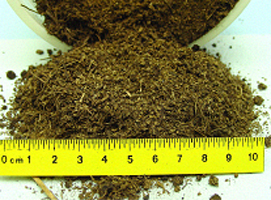Buffer capacity of a potting mix is its ability to resist a rapid change in pH, especially after fertilizers are added. Potting mixes with a high cation exchange capacity, which is provided by the inclusion of fine organic matter or clay in the mix, have good buffer capacity,
i.e., they resist changes in pH when fertilizers are added.


Most peat mosses have a relatively high buffer capacity.
When fertilizers such as ammonium phosphate or ammonium sulphate are added to a potting mix, phosphoric and
sulphuric acids can be produced, which in the absence of good buffer capacity, could lower the pH of the mix to levels potentially unsuitable for healthy plant growth. In potting mixes with good buffer capacity, the reactions of fertilizer with water still produce
H+ ions, but these are largely taken out of solution through colloidal exchange and hence pH changes are
minimised. See Handreck and Black (1984).
Materials with relatively high buffer capacity include;

